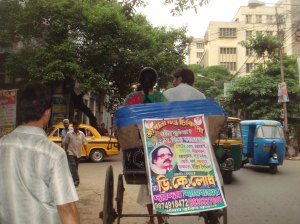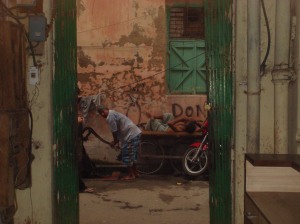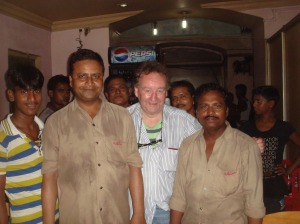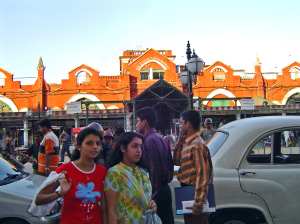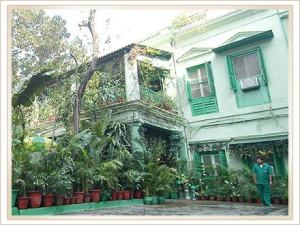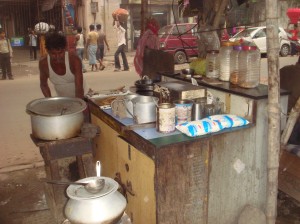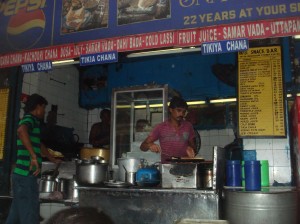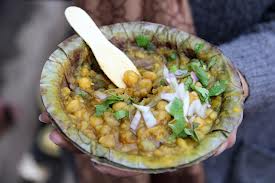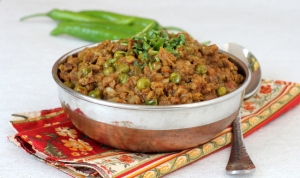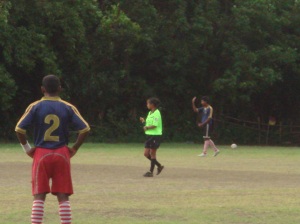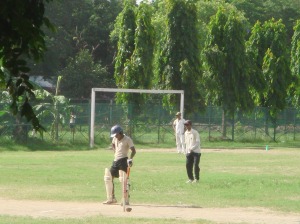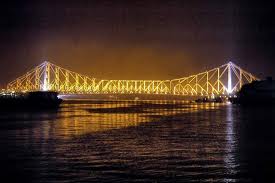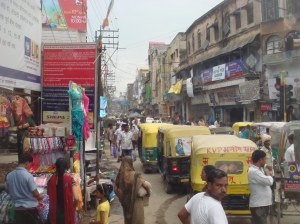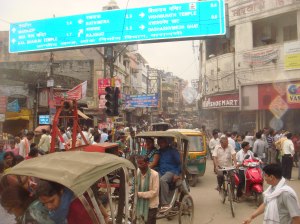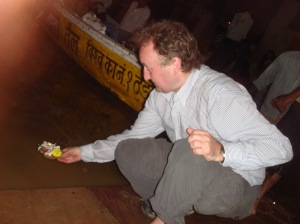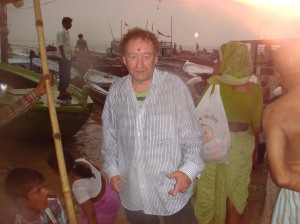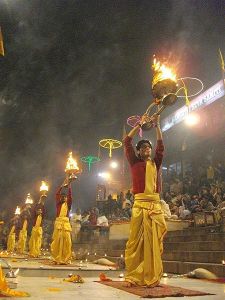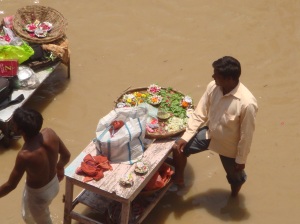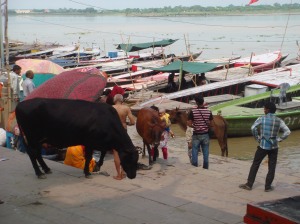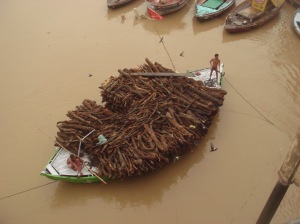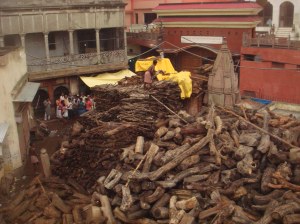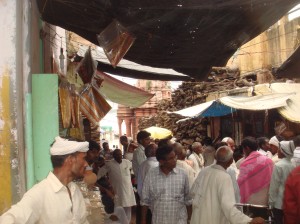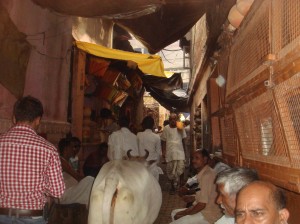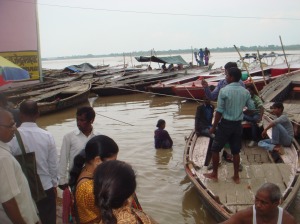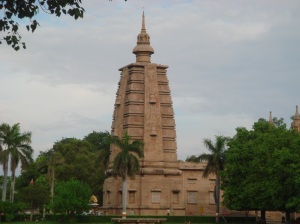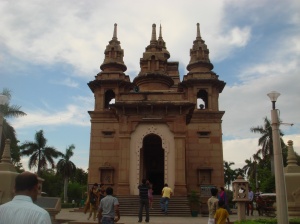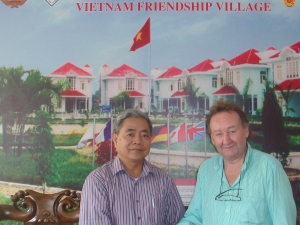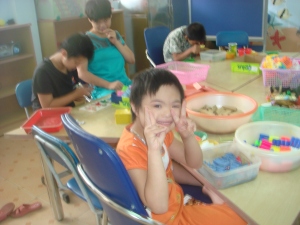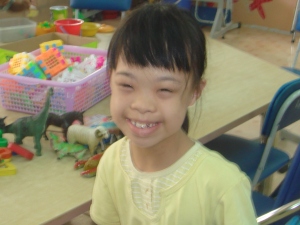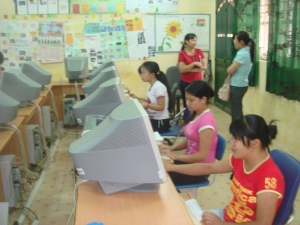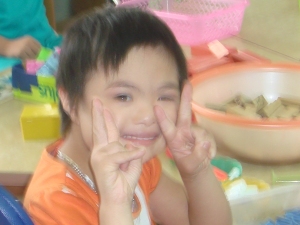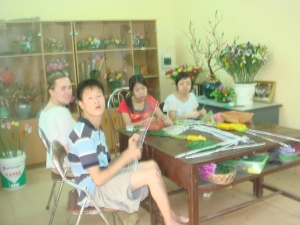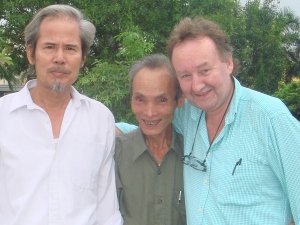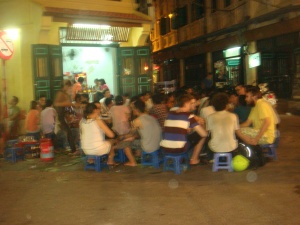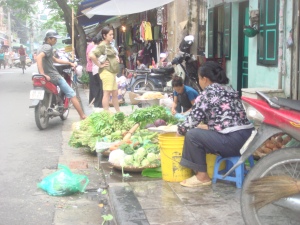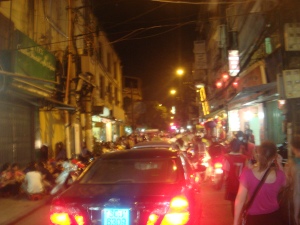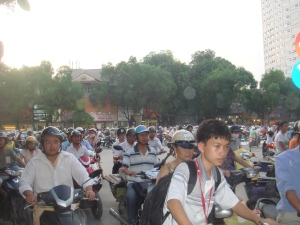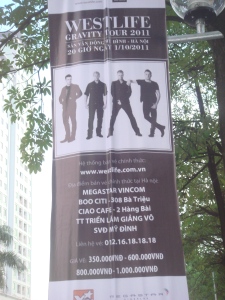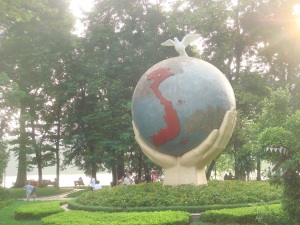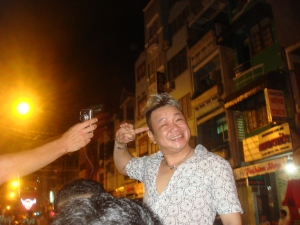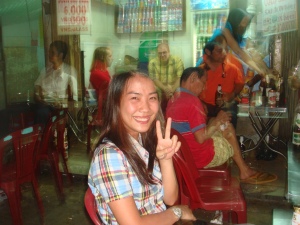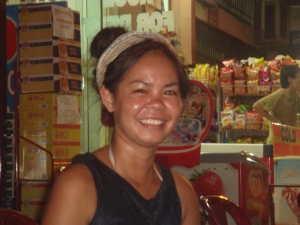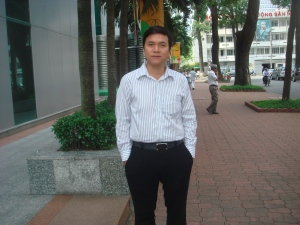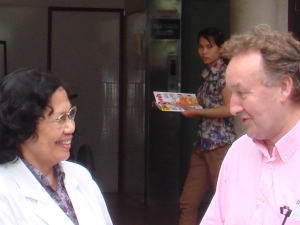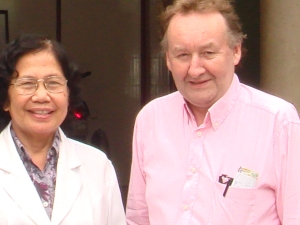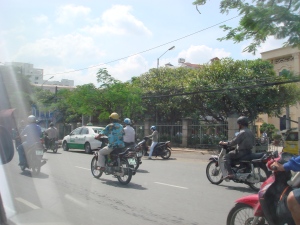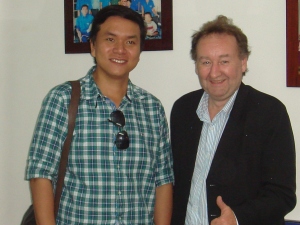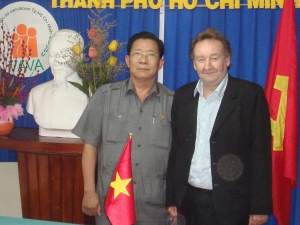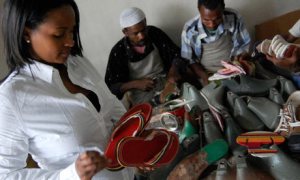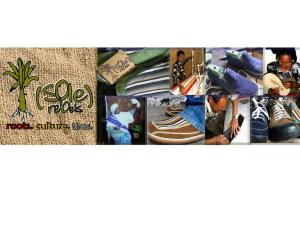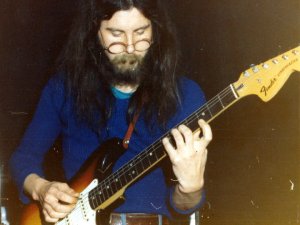Nothing quite prepares you for the experience that is India. An indication of what I might expect arrives early when the Air Asia gate staff announce that the Kolkata flight is ready for boarding. There is a sudden surge with eager Indian families milling around the boarding gate pushing other passengers in an effort to be first on the plane. India is an elbow society – ‘push and shove’ gets. This behavior defies logic though – the boarding passes clearly indicate the seat designations. But there is mayhem for the hapless flight crew as seating allocations are ignored. A minor signal of what may be in store.
Taking a yellow Ambassador taxi from the airport to my hotel, the wing mirror on my side is hanging off and the seat belt doesn’t work. The driver spends most of the journey on his mobile phone as he casually weaves his way through the masses of traffic – cars, trucks, buses, bicycles, motorbikes, human rickshaws, bicycle rickshaws and tuk-tuks. This is ‘in your face’ living – the blasting of horns, the roar of engines, the masses of people and noise, noise, noise.
Coming from a reasonably sparsely populated island on the west of northern Europe, the sheer masses of people running, walking, talking in every direction in this claustrophobic oven-like heat is quite overwhelming. The taxi swerves to avoid oxen crossing the road and out the side window I watch barefooted children pulling plastic bottles from a giant rubbish tip by the side of the river.
Next the driver downs his mobile to ask me where I’m from (time to get interested in passenger, methinks). “Ah Ireland, small country, cold – but good whiskey!”!. “I like Christians”, he smiles, looking into my eyes, obviously angling for a bigger tip, as he points out Mother Theresa’s house. We are now trundling (the car’s suspension is shot) through the tiny streets of old Kolkata There are animals and people everywhere – an old man squats bare-footed, shitting on a broken sidewalk. There’s food being cooked on every corner – chai, chapatis, puris in woks full of burning oil – the smell of oil, wood and charcoal is ubiquitously pungent.
Hotel
I am staying in a massive old colonial building, the Sunflower Guest House on Royds Street, a five minute walk from the touristy backpacker Sudder Street area – Its all clay pink on the outside and eight storeys up accessed by an old ‘squeeze box’ wrought iron lift. The reception is at the top of the building on the roof – you walk through a small roof garden to a large brown desk. The receptionist opens a large dusty ledger to record my stay. I fill out three different forms, sign the same – it’s interrogation rather than welcome. Dickensian even. I’m eventually ‘escorted’ to my ‘room’ – its depressingly brown but clean with TV, walk-in shower. Wifi, I am told, is on the seventh floor but not in the room.
A quick shower, change of clothes, a decent blast of air con and I’m off out to check out Sudder Street and the Newmarket trading area. Once again, you step out into a swelteringly humid atmosphere. The pavement is dug up, broken brick and treacherous, the buildings ominous, street stalls every few yards. I pass street food stalls every few steps and notice locals, in what could only be described as a dog hut, eating curry with their hands (right hand, that is). The noise and heat envelopes you.
Foodie Mission and Nizam’s
I’m on a foodie mission looking for Nizam’s. Having watched the first episode of Rick Stein’s ‘Indian Oddysey’, I want to check out Kolkata’s renowned fast food, the Katy Roll. Nizam’s is five minutes from Sudder Steet by Newmarket, formally known as Sir Stuart Hogg Market – a market originally built exclusively for British residents of Kolkata. Here you can buy everything from a toothbrush to a sari to a suit – except – you don’t get to do it on your own. As if out of nowhere, touts emerge from doorways – “Where are you from? – Where are you going – come with me – Don’t mind anyone else, I will look after you“. The hassle is incessant, constant and intrusive but I eventually find Nizam’s and the friendly, accomodating staff are a welcome antidote to the hovering touts. The Katy Roll is made up of strong pancake cooked in butter (everything is cooked in butter in Kolkata), then layered with egg, onion, their own sauce mixtures and a choice of vegetarian, chicken or mutton filling. I order a double egg and chicken with a beer. And, if a bit on the ‘heavy calorie’ side, its absolutely delicious.
Newmarket, touts and sanctuary in the Fairlawn
Post- Nizam’s , I stupidly relent to one of the touts, mainly because I am on the lookout for interesting rings. We walk fast through the market passing clothes shops, food, saris, silks, live chickens in cages, and eventually, to a trinket shop. I am given a hard sell as layer upon layer of ring boxes are laid out. I show them a ring, explaining that I want something similar, but they’re not listening, being too eager for a sale of any kind. I frustratingly put a halt to proceedings after the sixth ring box. The tout is waiting outside and frowns intently following a ‘no sale’. As I step outside, I notice another tout, a guy who had talked to me earlier, lurking in the background. Now I have two piranha-like touts on my trail as I try to make my way out of the tiny warren of alleyways . These guys, never deterred, stick with me. This is spy thriller stuff turned comedy turned straightforward harassment….the Indian way. As I make my way out through the warren onto the street, I turn and confront the them: ‘Right lads, here’s the story: I am going to walk this street now on my own’. They don’t listen, they don’t hear. They follow me, and follow me. I turn again as if to say: ‘What part of ‘no’ do you not understand?‘. Eventually I shake them but its a right royal pain in the arse.
A travel writer explained that if you really want to browse Newmarket unheeded you need to get there before 8.00 am in the morning while the touts are still asleep.
Fairlawn Hotel sanctury
I find sanctuary in the nearby Fairlawn Hotel, an old colonial hangout of the Raj, but run by the irrepressible octogenarian Vi Smith, who has run the hotel since 1962 – it’s a pleasant verdant oasis where young educated Indians hang. It’s also a popular hangout for creatives – boasting a guestbook of authors, journalists, musicians, painters and poets. There are photos of Graham Greene and Sting on the wall. The Kingfisher beer goes down well – the surroundings are a stark contrast to the madness on the streets outside its doors. You can see how the ‘old British boys network’ was set up – the fine old adminstrative buildings (‘goods in – goods out’ control centres) and then the social clubs, exclusively British – the Fairlawn and the Tollygrunge Hotel and Golf Club to the south of the city.
Rasta Internet Café and Chai, chai, chai
Leaving the Fairlawn I spot a sign for an internet café down a side alley – it’s a tiny room with a bank of 6 Skype head-phoned computer screens. There’s a good vibe here – Bob Marley playing quietly in the background – the crew here are young, friendly, interested and interesting. They cook up a chai brew on a small stove and offer me a couple of cups while I browse. This tiny internet café becomes my office and contact with the outside world while I’m here. I like the vibe and they seem to like me.
Chai pots and the caste system
Chai, the sickly sweet cloying tea brew made up of tea, boiling milk, sugar and spices are served on street stalls everywhere. On my way back to the hotel I notice the ubiquitous discarded broken chai clay pots strewn around the streets. The clay pots are an interesting link to the caste system. The reason the clay cups are discarded is because no higher caste person would dream of drinking a clay pot that’d been used by a lower caste. But it is organic – the rains eventually wash away the clay back into the soil. However, an environmental problem has arisen with the introduction of small plastic chai cups at train stations, resulting in tons of plastic cups discarded out of train windows along railway tracks.
Kolkata Street Food
For breakfast every morning I head around to Mirzra Ghalib Street (formerly Free School Street – (note: many streets are known by their British and their Bengali name) to a tiny shop for an Egg Vegetable Toasted sandwich (Boiled egg, red onion, green pepper, potato – all compressed,toasted and served with potato chips and a light tomato sauce) washed down with a cup of hot chai – It’s delicious and cost one euro.
Where possible I am eating vegetarian, my only exception being the Katy rolls and a lovely Keema Matar (minced mutton) which was so good I went back another night for more. I also drink nothing but bottled water (….and bottle cold beer!).
Kolkata street food is omni-present. There are chai stalls and chapatis, parathas, samosas. I eat a lot of street food but tend to head to the business/financial district of BBD Bagh for my street eats. My reasoning being that if higher earning business persons were buying this food daily, it must be consistently good …..and it was. Vegetarian thalis, ghugni chat and pana puri were my favourites.
Pana Puri
Pana puri is deep-fired puff ball filled with spiced potatoes and dunked in tamarind water – they are served up one at a time in a leaf bowl – Cost 4 for 15 rupees or about 25 euro cents. It’s an explosion of crunchy spice and flavour with a burst of bitter watery goodness.
Ghugni Chat
Ghugni chat is made from yellow split peas – the hot peas are added to a small leaf bowl, mixed with tomatoes, onions, coriander , tamarind water and lime juice and are served with a small wooden spoon.
Keema Matar
Keema matar is a minced lamb (mutton) and pea curry and I had this dish in Khalsa restaurant which is situated in a small side street off Sudder Street (turn right out of the Fairlawn Hotel and right again and its 30 metres up on your left). The depth of flavour in this dish was truly magnificent. I could taste cinnamon, clove, black cardamon, ginger, garlic. Served with a light vegetable curry, buttered nan and rice and a large beer, the bill came to €4. This was an ordinary restaurant serving extraordinary food at keen prices.
Park Hotel rocks
Park street is the Oxford Street or Grafton Street of Kolkata and the Park Hotel caters for the young middle class – there are three bars – two nightclubs and a rock bar. I head to the rock bar- it is dungeon- like with a curved ceiling but chic with air con and blue uplighting – a 33 cl bottle of Stella Artois is €4 and expensive by Kolkata standards but hey, you’re paying for the live rock band. And they’re damned good – dressed in suits and in their mid-twenties playing standard rock covers – they’re giving it socks and plenty of attitude. I’m mightily impressed and the band really lifts my mood.
A Saturday walk through a north city meat mart
A Saturday morning walk through Kolkata’s north city streets inadvertently leads me into a meat market. Here I witness goat carcasses hanging over white tiled shed fronts, skinned and bloodied, eyes bulging out of skeleton heads, guts and entrails in gutters, red blood streaming in rivulets into gulleys and rats scurrying into holes as I swat bluebottles buzzing around my head. Huge bladed knives hacking into meat and not a sign of refrigeration anywhere The sun beats down creating stifling heat and a stench that is suffocating almost to the point of wretching. My stomach is turning acidic – I’m gonna get sick – I can feel it rising. I’m finding it hard to breathe – in fact I’m trying not to breathe in – this process just about stops me from throwing up in the alleyway. I start to move quickly and eventually find myself out on a wide street where I find a chai stall. I sip the warm cloying milky tea vowing to get back to the guesthouse quickly to wash the stenchy meat odour from my body and clothes.
Sense of space
Earlier I mentioned that for many Indians this is an ‘elbow’ society – in Western society if you ‘don’t ask you don’t get‘ – in Indian society ‘if you don’t push, shove and elbow, you don’t get’.
There is also a different sense of personal space or lack of it. With such teeming populations personal space is minimal. I witness young men, children, but also women in saris washing themselves down with soap by the side of the road. They drench their saries, then apply a suddy soap massage and wash themselves down – all in full view of passers-by. Their access to space sparse – their personal space non-existent.
Sunday stroll
Sunday afternoon, before the long train trip to Varanasi, is spent near Maidan mainly watching cricket and soccer in the local park. At the soccer game, the locals are friendly, smiling and share their street snacks with me, as the two teams limber up before kick-off. The all-male spectator group remark on the referee – its a she!
Preparing for train trip to Varanasi – the taxi driver – his sleeping partners, his brother, his piss
The next stop on my trip is Varanasi but I hadn’t reckoned on the hassle involved in booking a ticket. To fast-track the process and avoid having to head to the Foreign Tourist Office, I get a travel agent in Sudder Street to book the overnight train. It was worth the few euro commission he charged to leave it in his capable hands. Only problem here is you have to wait until 4.00 pm on the Sunday of the projected departure, which is 8.00 pm, to be certain of your seat allocation – this goes live online at a specific time. However it’s green to go and I’m on my way.
I ask the travel agent what the average taxi fare is from Sudder Street to Howrah Railway Station and go looking for a taxi. Agreeing the fare, the driver beckons me to a side lane where his taxi is parked. But as I walk up the lane I notice three guys fast asleep inside his taxi. He knocks on the door, wakes them – but they stir lazily and seem in no hurry to be removed. At this stage I’m looking at my watch as I am told it helps to be at the station an hour before departure. Coming from the West, this is bizarre behaviour and yet the driver seems in no hurry at all. Getting into the back of the taxi, at the last minute, just as the driver starts off, a guy hops into the front passenger seat. ‘Oy, says I, what’s this!’ “Oh, don’t worry, he says, he’s my brother”. “He could be your grandmother for all I care, I’m outa here”. I opened the back door of the moving car and am about to jump, when the driver shouts – ‘OK, OK’ and his ‘brother’ gets out.
The Lonely Planet, what with the serious and rising incidences of rape across India, warn women to take down the name, registration number and licence plate, of all taxi drivers, and to never enter a taxi with two persons in the front – the regular excuse being – “Don’t worry, he’s my brother”!
We slowly make our way through the burgeoning street throngs and move slowly through the traffic toward the infamous and massive Howrah Bridge. Here thousand of young children live rough among detritus – they are the impoverished street kids and they appear like ants living among among mounds of rubbish by the bridge. Suddenly, my driver, without explaining what he is doing, hops out of the car beside the street kid camp and for what? – a long unhurried…. piss.
Howrah Station
Howrah train station is the largest station by area in India with 23 platforms and is situated on the west bank of the Hooghly river linked to Kolkata by the massive Howrah Bridge. Its dim neon-lit interior is teeming with travellers. With tannoy blaring, trains arrive and depart every few minutes. I spend my time observing the rats scurrying under the platform tracks.
The train journey to Varanasi lasts 14 hours with no catering car and an alcohol ban. While food sellers do hop onto the train at various stops, the food is not substantial – mainly snacks and, of course, plenty of chai. It’s simply impossible to sleep what with the creaking train noise, train stops and the incessant footsteps of passenger hordes alighting and boarding. I’ve booked 2 AC which is a two-sided bunk carriage, that is, two bunks, one up, one down, each side. After an arduous journey the train eventually trundles over the Ganges river and into the mad heat and hustle and bustle that is Varanasi railway station. The first thing you notice as you arrive into the main hall are the hundreds of people squatting and slumbering on the floor – all in front of the giant information board. Outside, a tuk tuk driver whizzes me off in the direction of the Ganges and Dassaswamedh Ghat.
Varanasi
Varanasi or to use its old name, Benares (City of Life), is the spiritual capital, and one of the holiest places in India– it is known, according to the Lonely Planet, as the ‘beating heart of the Hindu universe and a crossing place between the physical and spiritual worlds’. On the banks of the Ganges (or Ganga as the locals call it), with a history of over 2,000 years, it is where the most intimate rituals of Hindu life and death take place in public, on the city’s ghats. The ghats are the tiny jetties with stone steps reaching down to the river – over 80 of them dot the riverside with the most prominent being Dassaswamedh Ghat and the famous Manikarnika or ‘burning’ cremating ghat.
I have taken an overnight train, having spent two bewildering days trying to get an angle on Kolkata. A 14 hour trip – leaving Kolkata at 20.00 hours Sunday night and arriving into Varanasi at 10.00 am the next morning. I had, for many years, dreamt of travelling across India by train, however the romantic vision was a million miles from the ‘actual’ experience. Unlike most other countries – and I enjoyed a great long train trip a few years ago from Bangkok up into the northern mountains of Thailand – there is no dining/catering car, no bar, and you are forbidden from drinking alcohol on the train.
Sleeping was difficult as the 18 carriage train trundled from station to station – offloading and loading passengers – I managed a meagre four hours and was eventually awoken as the train pased over the slowly meandering Ganges. However, as the train rolled ever slowly across the Ganges bridge into Varanasi, the image of the rising sun beaming down upon this ever wide but grey slow rolling river – the truly magnificent contrasting colours – the beautiful upriver view of Varanasi and its dotted tiny jetty ghats – will remain forever .
I’m soon jolted back to reality though. Mayhem, of course, ensues alighting from the train, bodies moving in every direction, roars, shouts, whistles, tannoy announcements and heat, heat, heat.
In Varanasi, I get lucky with my choice of guesthouse which was right on the Dassaswamedh Ghat (note: although it is the biggest ghat, it is still really quite small) where nightly, the ganga arti, a spectacular ceremony offering prayers to Ganga at sunset,is the highlight of the day.
Tourists and pilgrims pay to sit in the boats on the river to watch the ceremony – the ghat is awash with old and young, families and friends who travel right across India for the ganga aarti. I had a privileged view of proceedings each evening from the steps of my guesthouse as they performed the “Agni Pooja” (Worship to Fire.) It’s a fascinating ritual – full of colour, incense, chanting, drums, the works.
After my first night, I was early to bed, mainly because, one – there are no bars as such – no natural area to congregate and meet other travellers and secondly, the guesthouse owners and tourist information advise foreigners to be back in their hotels by 10.00 pm, claiming it is unsafe. Most lock up their doors by 10 so there’s a virtual curfew anyway
The following morning I am awoken by puja prayers at 6.00 am on the ghat and decide to explore the tiny dark alleyways of the old city and experience the famous burning ghat of Mankarnika.
Incidentally, early morning is the best time of the day – nice and cool – I come across Indian teenagers playing cricket – they are ‘cricket mad’ here and play it with anything – a plank of wood, a box as a wicket and a tennis ball. I also spot older men playing outdoor badminton.
I head through the tiny alleyways – detritus everywhere, cow shit, dog shit, goat shit, human shit?… goats in home doorways, men coughing and spewing vile onto the path, a guy pissing in a doorway – its visceral, shocking stuff for an urbanised Westerner. Everything and everyone is so ‘in your face’.
I get to a spot where you can overlook the cremation funeral pyres. It’s an old temple overlooking the body burning. There are mounds of logs stockpiled in a mumble jumble yard stacked high ….and I notice wooden boats arriving along the Ganges wharf with more wood from upriver ready for unloading.
As is out of nowhere a young Indian steps into my path and tells me he can take me up the levels of the temple where I can get a better view – no need to worry, he says, ‘I am a volunteer and I work for the hospice here which looks after old women’. He tells me there are different kinds of wood for the burning and your spending power or social economic status will decide the type of wood you use for your relative’s burning.
There are five exemptions from cremation – holy men, lepers, animals, women two months pregnant and babies. The families pay for the wood by weight and I notice a stack being shifted onto this medieval looking iron scales. I get a great view of the bodies being laid on the wood pyres and the smoke rises in plumes giving off an oily pungent aroma. Next thing I notice two dogs up on an already burned pyre and I ask the guy what they’re doing. ‘Oh, they’re trying to pull out and eat the bones.’ And they are eating them!
Next thing he hits me for a donation for the hospice. It’s a scam but I have 50 rupees ready and hand it to him. He gets aggressive and wants 500 at least. I tell him what to do with himself, turn my back and walk…. but it’s not nice – it’s a bad vibe, and a bit nasty.
Retracing my footsteps through the alleyways, I hear the pitter patter of quick footsteps – around the corner come 6 guys carrying a bamboo stretcher – they are known as doms . Doms are not even categorised as a caste – they are outside the caste system – the untouchables. Their job is to carry the bodies down to the river where they are dipped in the Ganges water for ‘purity’ before being placed on the pyres. The bodies are rubbed in butter ( I’ll never enjoy a buttered nan again!) and this one is laid out on a bamboo stretcher, the head wrapped in plastic and covered in yellow colored cloth strapped with cow dung on each side.
I eventually get out of the alleyways and head back to the guesthouse for breakfast but notice groups of Indians all bathing by the ghat – they are not so much bathing as dipping – it’s all part of the blessing and purity ritual. Except for one important observation – while the Ganges, or Great Mother as it is known to Hindus, provides an important and essential part of their spirituality, it is so heavily polluted at Varanasi that the water is septic – no dissolved oxygen exists yet on average 60,000 visiting Indians take a dip every day – along this 6 kilometre stretch 30 open sewers flowing into it. Samples from the river estimate 1.5 million faecal coliform bacteria per 100 ml of water – the World Health Organisation (WHO) recommends a safe bathing figure of less than 500!
The other aspect to Varanasi is the industry that has built up around its reputation, and everything from silks, cottons, saris, spiritual artefacts, the hospitality sector, tourism, tuk tuk and rickshaw transport are all here vying for your money. You walk down any street and seemingly out of nowhere touts are trailing you asking you ‘where are you from, what are you looking for, do you wanna come in my shop and buy sari for wife’ – even street kids look at you straight-faced and ask you if you would like to come to their shop. And I have not even started on the beggars and the homeless. I began to think – maybe this will wear off after a few days …..and eventually it did. They got to know my face. But even that only meant the approaches were reduced from thirty to twenty a day. You have to be firm – mix it with a little smile and a wave away of the hand.
Sarnath
So you have spiritual Varanasi at the ghats, the old city and alleyways and the burning ghats, the hustle and bustle of selling along the main streets and then, unusually, about 12 kilometres outside of town is the Buddhist temple of Sarnath. It is one of only four sacred Buddhist locations – a kind of Lourdes for Buddhists. Budhha came to Sarnath to preach his message of the middle way to nirvana. He gave his first sermon to a few followers in a deerpark, which is recreated here. I hire a tuk tuk driver for the afternoon and spend a few hours wandering the verdant grounds and visiting the temple where Buddhists spend their days chanting. Again it is a welcome oasis of calm from the madness that is Varanasi.
On the way back I get the tuk tuk driver to stop and buy me a couple of cold cans of Kingfisher beer. So here I am in the back of a tuk tuk, having come from one of the most sacred of Buddhist temples, and I’m contentedly sipping away at my revered cold beer in 35 degrees of heat (95 Fahrenheit) as my tuk tuk driver weaves his noisy way through the traffic chaos and back into Varanasi. Irish or what!
I meet a Belgium girl on my way back to the guesthouse and each of us seemed pleased to spend some time together – there are few Europeans around this time of year (July). Having traveled extensively she said that there was an anacronym used to describe Nepal and India – Nepal stands for Never Ending Peace and Love and India stands for I’ll Never Do It Again!
We find an air-conditioned café and drink chai and humorously swop experiences. I offer her the chance to view the ganga arti from the steps of my guesthouse which she readily accepts. After a fascinating ceremony, we retire upstairs to the guesthouse restaurant where we share a cold beer and a curry. It’s now getting near curfew time so I walk her through the old town to the roundabout. Her guesthouse is a few kilometres away and I warn her again of the curfew and advise that she hire a tuk-tuk.
I don’t know whether it is bravery or foolishness but I do admire the resilience of young Western women and their strength and ability to take on solo travels of this nature, given the ever-present saga of violence against women in this fascinating country.
Getting out of Varanasi
The following morning I approach the guesthouse manager and ask him if can arrange a return train ticket to Kolkata. At lunchtime I ask him for a progress report He casually shrugs his shoulders and tells me the earliest I can leave is July 17th. This is July 4th! I explain that my flight out of Kolkata leaves on July 12th. He shrugs and tells me maybe I could get a flight. I gently but forcefully tell him there must be another way and he casually suggests that maybe I could call up to the Foreign Ticket desk at the train station and see if they might sort me out. He has hardly finished his sentence as I turn on my heels and head out the door.
The guy at the Foreign Ticket desk could not have been more helpful and arranges a ticket for the 17.00 hour train the next day. He warns me that it is always advisable to book at least two days before travelling anywhere in India.
The next day I arrive a good hour before the train leaves but notice that, according to the massive info board in the main hall, my train is not leaving until 6.00 am the following morning. I immediately head for the Foreign Ticket Office only to be told by my erstwhile helpful friend that my train has been delayed by 13 hours. I’m now hovering somewhere between exasperation and sheer panic but he moves quickly. Once again, I experience the bureaucracy kicking in. He gets me to buy a standard Indian ticket, that is, a local’s ticket, for a few euros, but now I need to apply for a refund of my original ticket. But the only way they can process a refund is by feeding my details into their computer system – and guess what? ….the system is down. Finally and just as my train arrives into the station, the computer system comes back online. My refund is processed quickly and on the platform I pay the ticketmaster for the return journey – they even escort me to the allocated seat. Panic and last minute – but I am mightily impressed that they looked after me so well and managed to get me on the train. After all – this IS India
Late into the evening on my return train journey, to Kolkata, late into the night, I hop off at one of the lazy stops along the way to buy food from a platform vendor but for some reason he’s gabbing on and waving his hand – ‘not enough rupees?, I say to him’ – I look around and the train is leaving the station. I never moved so fast as I ran down the platform, eventually grabbing the rails, pushing me up into the carriage. No whistles, no flags, no electronic arrival and departure board – what a ‘wits about you’ country!
Another India?
Taking the train out of Varanasi at sunset for the night journey back to Kolkata, I get a glimpse of another India – a rural one – verdant fields of vegetation, workers picking tea, beautiful landscapes with people walking man-made paths through trees and fields wearing brightly coloured reddy pinks which looked amazing at dusk. The scenes I am watching are really quite awe-inspiring – the contrasts of dwindling early evening light…and how the bright coloured cloths speckle the dimming dusk light. Its shadowy but sharply brilliant as the sun sets and the moonlight hovers.
It allowed me the thought that, through Kolkata and Varanasi, I had embarked on a ‘bare knuckle ride’, and maybe experienced some of the mad and crazier aspects of India and that there is another – a more peaceful, tranquil friendlier one that I’ve yet to experience.
Journey home
The 14-hour return journey to Kolkata starts well leaving at a slow grinding pace around 17.40 and within a couple of hours there was the experience of contrasting colours as the sun went down. I had packed my travelling bag under my bunk bed chained to the leg. It became impossible to sleep what with the noise of the train, the stopping and starting, the shouting of food hawkers and the general hustle and bustle of travellers getting on and off at stations. It is usually when you try your hardest to sleep that the brain goes into overdrive and resists and so it was – 10.00 pm no sleep, midnight and no sleep and still 8 hours to go. I think I eventually went into a deep sleep ten hours later around 4.00 am. The train eventually trundled back into Howrath in Kolkata in the early morning sunshine, a taxi hailed, I climbed back into my hotel bed for a proper long sleep.
By a thread
India like many countries is full of contradictions. A rising GDP, an IT and software powerhouse and an ever increasing educated middle class. It also suffers from extremes of overpopulation, pollution and destitute poverty. You get the feeling that the caste system is the social glue that somehow keeps this diverse society dangling by a thread.
This has been a whistle stop tour and one that has not done justice to the real India – there are so many aspects to this vast and complex mix of religions, dialects and regions. Should I have arranged a cultural attaché to accompany me and interpret my observations? – hard to know but……… sometimes it helps to just ‘go with the flow’ and ‘experience’.
One thing’s for sure – I can not and will never, ever forget India. I vow to return.
Notes
